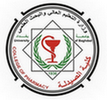The College of Pharmacy discussed the MSc thesis entitled “Preparation and In Vitro Evaluation of Rivaroxaban Nanocrystal as Orodipersible Dosage Form” by the student Khalid Jamal Abd-Ali and the supervisor, Lecturer Dr. Nawar Mikhael Toma, at the Pharmaceutics Department.The study aimed to prepare stable liquid nanocrystals of poorly water- soluble rivaroxaban to enhance its solubility and dissolution rate. These nanocrystals were subsequently formulated into fast-dissolving tablets to improve patient compliance and promote a more rapid onset of therapeutic action. The study included the solvent–antisolvent precipitation method to formulate rivaroxaban nanocrystals. Various stabilizers, including (Poloxamer 188, PVP K-30, Soluplus, and Tween 80) were evaluated at different drug-to-stabilizer ratios (1:0.5, 1:1, and 1:1.5) to optimize particle size distribution and polydispersity index (PDI). A defined amount of rivaroxaban was dissolved in a binary solvent mixture of methanol and dichloromethane and subsequently introduced dropwise into an aqueous phase containing the selected stabilizer under continuous magnetic stirring for one hour.The results showed that among the prepared formulations, formulation F11 (drug:soluplus at a 1:1 ratio, stirred at 500 rpm with an aqueous phase volume of 15 mL) demonstrated the smallest particle size, optimal PDI, and a favorable zeta potential. The selected nanocrystals were then lyophilized and subjected to in vitro dissolution testing. Compared to the raw drug, the lyophilized nanocrystals exhibited significantly enhanced solubility and dissolution, with approximately 94% of the drug released within 60 minutes, compared to 41% for the unprocessed drug. The optimized nanocrystals (F11) were further formulated into an orodispersible tablet (F11a), which exhibited a rapid disintegration time of 32 seconds and low friability (0.37%). More than 93% of the drug content was released within 15 minutes, indicating a fast-dissolving profile.The study recommended further evaluation of the optimized formulation in pharmacokinetic studies to establish the correlation between in vitro release profiles and in vivo bioavailability, aiming to determine peak plasma concentrations and overall therapeutic performance.




